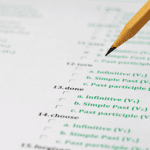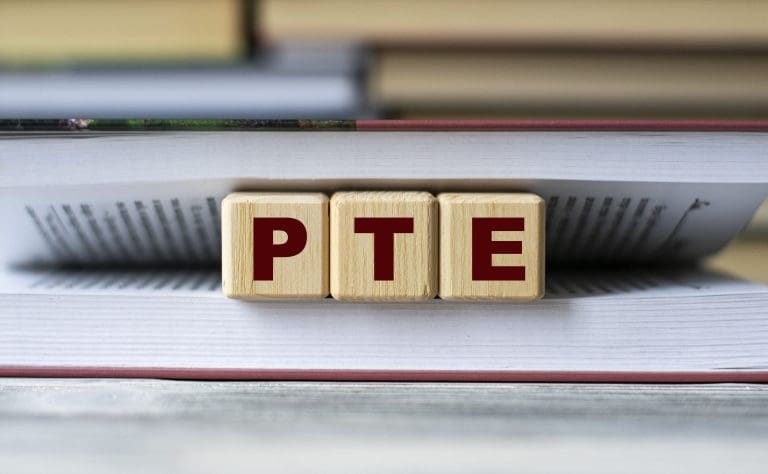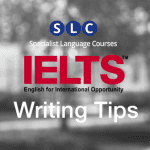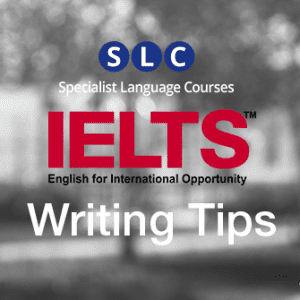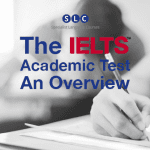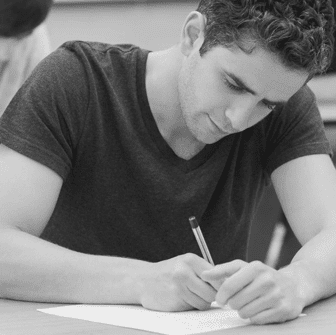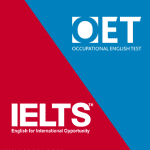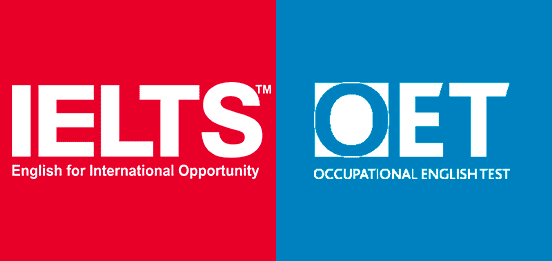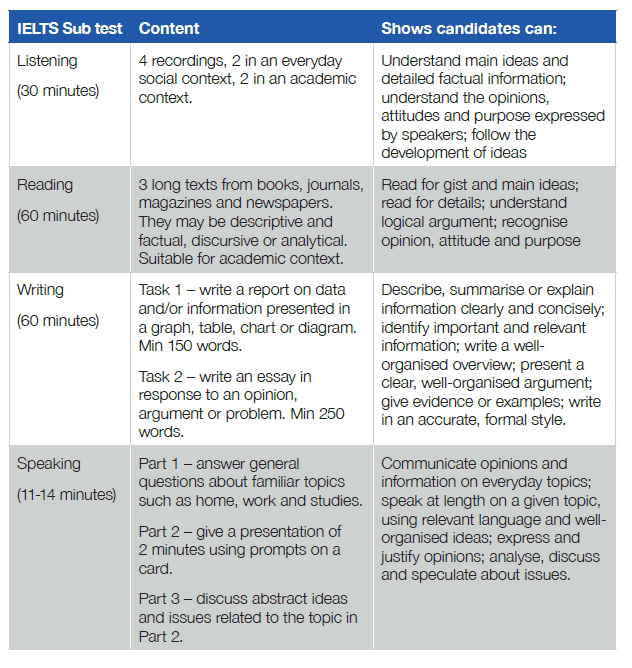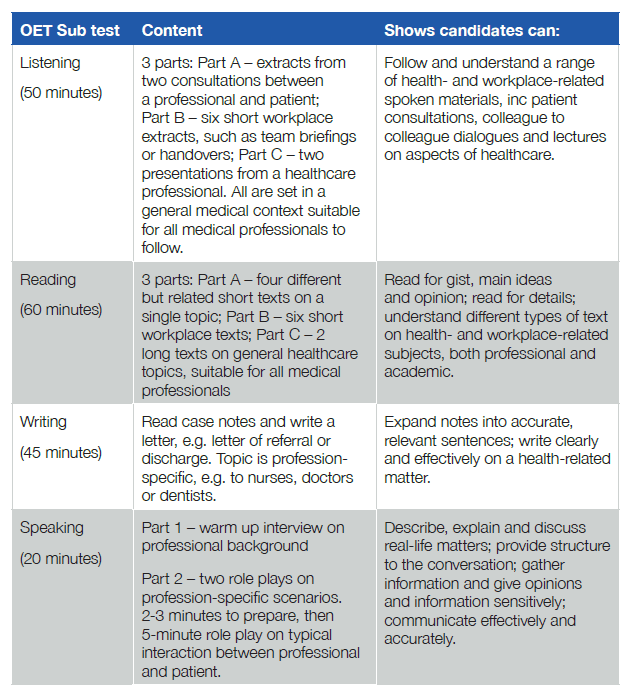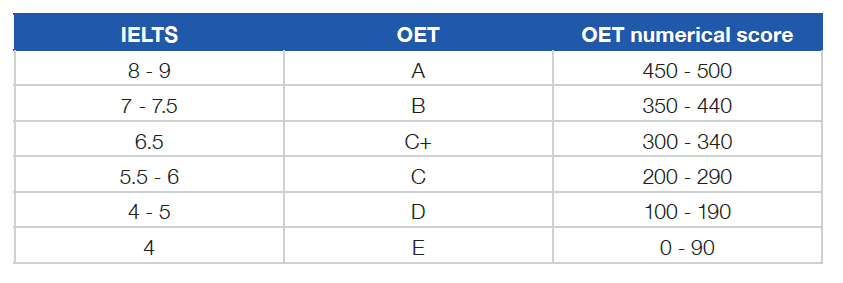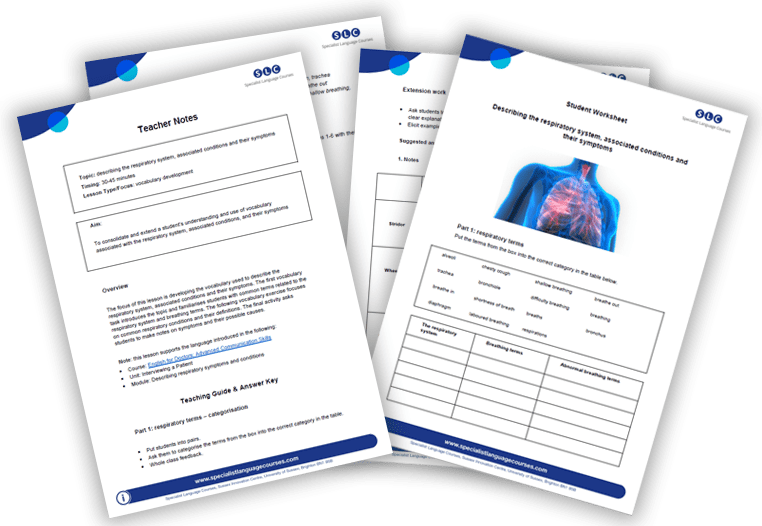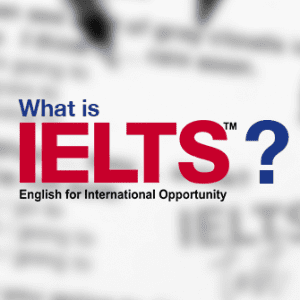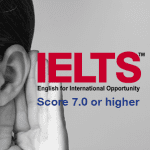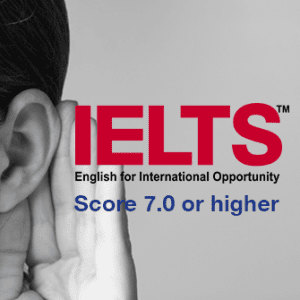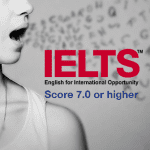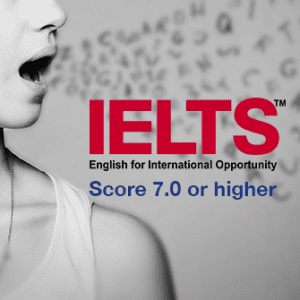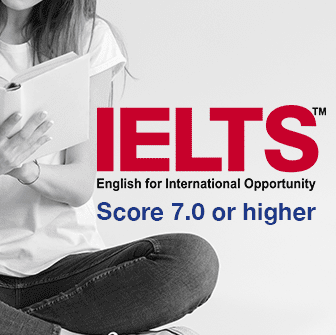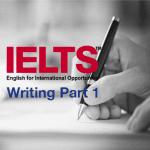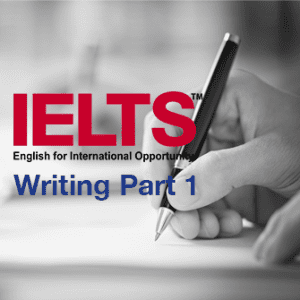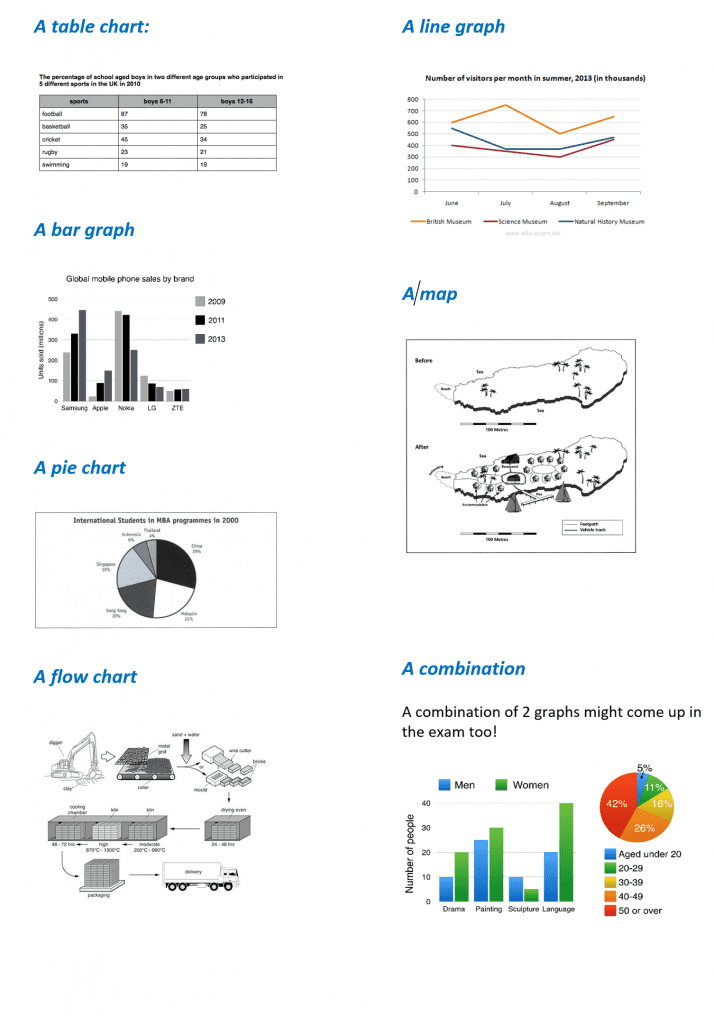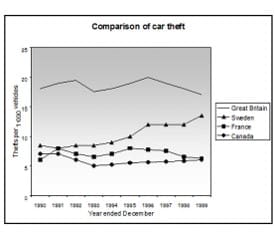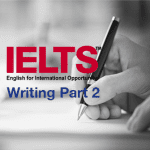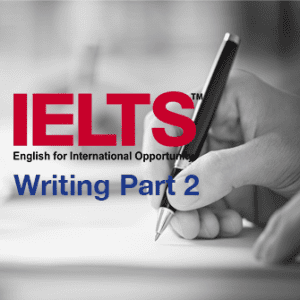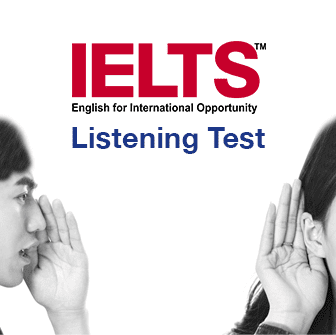About the PTE Academic English Test
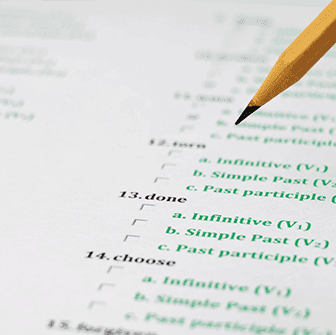
PTE Academic is taken on a computer in a test centre. There are 3 sections: Speaking & Writing, Reading, and Listening, which include 20 different kinds of questions.
The test takes 2 hours to complete, and you do it in one sitting. Your answers are marked using sophisticated AI (Artificial Intelligence) rather than a human, so marking is consistent and you get your results quickly, normally within 2 days.
There are over 400+ test centres in 117 countries with many test dates.
What do you do in the test?
Here is a breakdown of the different sections of the PTE Academic English test.
Part 1: Speaking & Writing
The Speaking & Writing section of the test is 54 to 67 minutes long and has 7 different question types. You are tested on your speaking and writing skills, using the English you might hear in an academic environment.
- Read Aloud
A text of up to 60 words appears on your screen. Read the text aloud so it is recorded.
- Repeat Sentence
First listen to a recording of a sentence, then repeat the sentence. The sentence is 3 to 9 seconds long and you have 15 seconds to repeat it.
- Describe Image
An image appears on your screen. You have 40 seconds to describe the image in detail.
- Re-tell Lecture
First you watch or listen to a lecture. Yu then have 40 seconds to re-tell the lecture in your own words.
- Answer Short Question
Listen to a question and then answer it with a single word or a few words. The question is 3 to 9 seconds long and you have 10 seconds to answer it.
- Summarize Written Text
Read a text of up to 300 words, then write a one-sentence summary of the passage of no more than 75 words. You have 10 minutes to do this.
- Essay
Write an argumentative essay of 200 to 300 words on a given topic. You have 20 minutes to do this.
Part 2: Reading
The Reading section of the test is 29 to 30 minutes long and has 5 different question types.
- Reading & Writing: Fill in the Blanks
A text of up to 300 words appears on your screen with several gaps. By each gap there is a drop-down list of words. Select the word which you think best fills the gap.
- Multiple Choice, Multiple Answer
Read a text of up to 300 words, and then answer a multiple-choice question on the content or tone of the text. You need to select more than one response.
- Re-order Paragraphs
You see several text boxes on your screen. Put these in the correct order to form a whole text.
- Fill in the Blanks
You see a text of up to 80 words on your screen with several gaps in it. Drag words from a box to fill the gaps. There are more words in the box than there are gaps, so you don’t use all the words.
- Multiple Choice, Single Answer
Read a text of up to 300 words, then answer a multiple-choice question on the content or tone of the text by selecting one response from a selection.
Part 3: Listening
This Listening section of the PTE Academic test is 30–43 minutes long and has 8 different question types. The questions are based on audio or video clips, which play automatically. You only hear each audio or video clip once. You can take notes.
- Summarize Spoken Text
Listen to part of a lecture lasting between 60 and 90 seconds, and then write a summary of what you hear of between 50 and 70 words. You have 10 minutes to listen and write the summary.
- Multiple Choice, Multiple Answers
Listening to a recording of 40 to 90 seconds, then answer a multiple-choice question on the content or tone of the recording by selecting more than one answer.
- Fill in the Blanks
You see a transcript of a recording on the screen, with several gaps. Listening to the recording and type the missing word in each gap. The recording lasts between 30 and 60 seconds.
- Highlight Correct Summary
You see a selection of summary paragraphs on the screen. Listen to the recording and select the one that matches it best. The recording lasts between 30 and 90 seconds.
- Multiple Choice, Single Answer
Listening to a recording of 30 to 90 seconds and select the correct answer to the question from the options given.
- Select Missing Word
Listen to a recording where the last word or group of words has been replaced by a beep sound. Select the most appropriate option to complete the recording. The audio is between 20 and 70 seconds long.
- Highlight Incorrect Words
Listen to a recording (15 to 50 seconds) while reading the transcript. Highlight the words which are different.
- Write from Dictation
Listen to a sentence, and then type the words into a box. The recording of the sentence lasts between 3 and 5 seconds.
Want to prepare for the PTE Academic English test?
SLC’s expert teachers help you learn the language, skills and techniques to perform at your best in the PTE Academic test. You can book private lessons with them here.
More to explore

SLC win Ufi grant to develop AI language learning app for social carers
We’re delighted to have won a grant from Ufi VocTech Trust to develop an AI-driven technology solution that provides cheap phone-based language and communication skills

SLC and Doxa Medical English app go into partnership
We’re delighted to announce a partnership with leading Medical English app, Doxa.

What OET and IELTS scores do international medical graduates (IMGs) need to join the UK Foundation Programme?
Back to Menu ↩ What is the UK Foundation Programme? The UK Foundation Programme is a two-year, structured, work-based training programme which is designed to
Subscribe to our newsletter
Get updates and get the latest materials on Medical English, OET and IELTS




